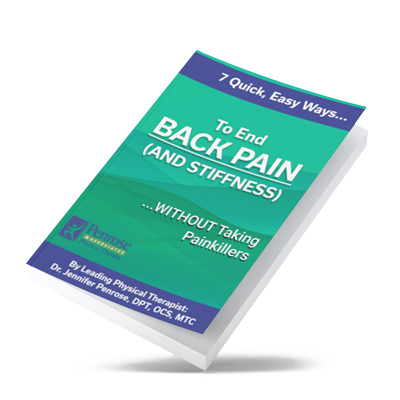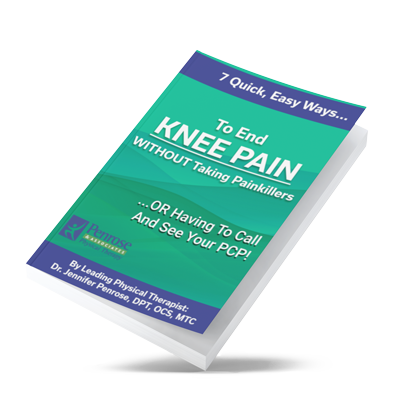Have you ever wondered how fragile bones can impact your daily life?
Imagine feeling a sudden sharp pain from a simple bump or struggling with routine activities because your bones have become too weak. These scenarios are all too real for many people dealing with osteoporosis.
This silent disease progresses in stages, often without noticeable symptoms, until a fracture occurs.
Let’s take a journey through the stages of osteoporosis and discover how you can manage and improve your bone health.
At Penrose Physical Therapy, we focus on both treating and preventing osteoporosis.
Here are Stages of osteoporosis:
Stage 1: Silent Beginnings
Osteoporosis begins quietly. In the early stages of Osteoporosis, there are no visible symptoms. You might feel perfectly healthy, going about your daily activities without a second thought about your bones.
However, beneath the surface, your bone density is gradually decreasing. Bones are living tissues, constantly being broken down and rebuilt. In this initial stage, the rate of bone loss starts to exceed the rate of bone formation.
This stage is often referred to as osteopenia, a precursor to osteoporosis. While not everyone with osteopenia will develop osteoporosis, it serves as a critical warning sign.
Regular bone density tests can help identify osteopenia early, allowing you to take proactive steps to strengthen your bones before they become too fragile.
Stage 2: Noticeable Bone Loss
As osteoporosis progresses to stage 2, bone density continues to decline, but you still might not notice any symptoms. This stage is characterized by a significant decrease in bone mass, making bones weaker and more susceptible to fractures. A minor fall, which might have caused a bruise in the past, could now result in a fracture.
At this stage, the importance of early intervention becomes evident. Incorporating weight-bearing exercises, like walking or strength training, can help slow bone loss. Ensuring adequate calcium and vitamin D intake is also crucial. These nutrients are essential for bone health and can help maintain bone density.
Stage 3: Heightened Risk and First Fractures
In stage 3, the risk of fractures increases significantly. This is often the point where osteoporosis is first diagnosed because a fracture brings the underlying bone weakness to light.
Common fracture sites include the hip, wrist, and spine. These fractures can lead to severe pain, reduced mobility, and a significant impact on quality of life.
A spinal compression fracture, for example, can cause chronic back pain and a noticeable loss of height. Hip fractures often require surgery and can result in long-term rehabilitation or permanent loss of independence.
This stage underscores the necessity of medical intervention and lifestyle changes to manage osteoporosis effectively.
Stage 4: Severe Osteoporosis
Stage 4 represents severe osteoporosis, where the bones have become extremely fragile and porous. Fractures can occur with minimal or no trauma, and recovery becomes more challenging.
Daily activities may become increasingly difficult, and the risk of recurrent fractures is high.
At this stage, maintaining bone health requires a comprehensive approach. Medications to strengthen bones and reduce fracture risk are typically prescribed.
Additionally, a tailored exercise program focusing on balance and strength can help prevent falls. It’s also essential to create a safe living environment to minimize the risk of accidents.
Living with Osteoporosis: Steps to Strengthen Your Bones
Living with osteoporosis doesn’t mean you have to accept a life of limitations. Understanding the stages of osteoporosis empowers you to take proactive steps to manage your condition and improve your bone health.
Nutrition: Ensure your diet includes plenty of calcium-rich foods like dairy products, leafy greens, and fortified foods. Vitamin D is equally important as it helps your body absorb calcium. Spending time in the sunlight or taking a vitamin D supplement can help maintain adequate levels.
Exercise: Regular physical activity is vital for bone health. Weight-bearing exercises, such as walking, dancing, or hiking, and resistance exercises, like lifting weights, can strengthen bones and muscles. Balance exercises, such as tai chi or yoga, can reduce the risk of falls.
Regular Check-Ups: Keep up with regular bone density tests to monitor your bone health. Early detection of bone loss can help prevent progression to more severe stages of osteoporosis.
Lifestyle Changes: Avoid smoking and limit alcohol consumption, as these can accelerate bone loss. Ensure your home is safe by removing tripping hazards, installing grab bars in the bathroom, and using non-slip mats.
Medication: If prescribed by your healthcare provider, take osteoporosis medications as directed. These medications can help slow bone loss and reduce the risk of fractures.
Understanding the stages of osteoporosis is crucial in taking proactive steps to protect your bones and maintain your quality of life. From silent beginnings to severe osteoporosis, each stage requires a different approach to management and care.
By focusing on nutrition, exercise, lifestyle changes, and regular medical check-ups, you can strengthen your bones and reduce the risk of fractures.
Your Next Step to manage osteoporosis and improve your balance
Worried about osteoporosis? Whether you’re just starting to have concerns or have been managing it for a while, it’s always a good time to seek professional guidance.
Reach out to us at Penrose Physical Therapy to discuss your concerns and explore your treatment options.
Our expert team will create a personalized plan to help you manage osteoporosis and enhance your balance.
At Penrose Physical Therapy, we focus on both treating and preventing osteoporosis.
Give us a call at (360) 456-1444 or visit our contact page for more information.
Together, we can strengthen your bones and help you maintain a vibrant, active lifestyle.
Other FREE Resources To Improve Balance
Here Our Podcast – Falls and balance! Interview of a patient after a fall, surgery, and returning to function at 83 years old!
Read Our Blogs – How to Improve Balance and Reclaim Independence






